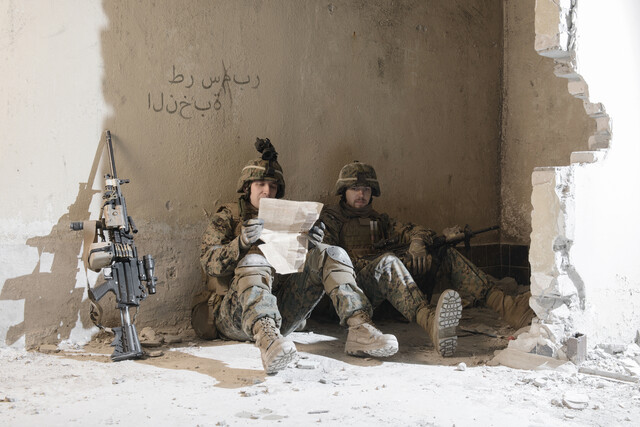The Gulf War
Unravel History's Sandstorm: The Gulf War Explored
The Gulf War

Unravel History's Sandstorm: The Gulf War Explored

Step into the heart of history and uncover the indelible impact of the Gulf War. This course goes beyond the typical timeline, diving deep into the motivations, strategies, and legacies of this unprecedented conflict. You'll gain insights not only into military tactics and political maneuverings but also into how this war reshaped nations and history itself. Designed for those who crave a nuanced understanding, this journey is led by expert storytellers poised to transform your perception of global events. Elevate your knowledge and expertise, and emerge with a profound awareness imperative for anyone seeking to comprehend contemporary geopolitics. This is more than a course; it's an odyssey into the forces that have shaped our modern world. Join us, and redefine your perspective.
In This Course 
16 Hours average completion time
1.6 CEUs
20 Lessons
28 Exams & Assignments
18 Videos
21 Reference Files
Mobile Friendly
Last Updated December 2025
Description 
In 1990-1991, the United States of America, under President George H. W. Bush, along with several allied nations launched a massive military operation in the tiny nation of Kuwait at the northern boundary of the Persian Gulf. This was the first war following Viet Nam in which America was actively involved in a combat role. Indeed, the United States played a key part in organizing, funding, building, executing, and maintaining the war. It was a historic confrontation in that it was the most widely-seen war in history, covered heavily on television, radio, internet, and other media outlets across the globe.
Beginning with Operation Desert Shield, which yielded to the much larger Operation: Desert Storm, this conflict became known as the First Gulf War. This course will examine the history and setting of the Gulf War, the motivations for fighting it, the strategies and tactics that were used, and the battles that were fought. In addition, an examination of how the Gulf War changed the nature of war, the reaction to the conflict at home, and dealing with the aftermath will be undertaken to provide a detailed and comprehensive overview of the conflagration.
Skills You'll Develop 
- Media influence evaluation
- Leadership decision-making strategies
- Geopolitical analysis capabilities
- Historical context comprehension
- Strategic military assessment skills
- Cross-cultural diplomatic understanding
- Military technology insight
- Crisis management techniques
Discover More Skills Like These 
What Others Are Saying 
EB
"Extraordinarily Helpful"
★★★★★
This course helped me to have a clearer understanding of the complex situations in the Middle East...the history of terrorism and the Gulf War were my 2 favorite lessons....
Related Courses 
-

Special Events Planning
-

World War l and ll
-

Resume Writing
-

Collaboration Skills
-

Introduction to Cell and Molecular Biology
-

Personality Development
-

World Religions
-

American Government
-

How to Improve Your Concentration
-

Math All-In-One (Arithmetic, Algebra, and Geometry Review)
-

American Wars: American Revolution and Civil War
-

Business Budgeting 101: How to Plan, Save, and Manage
-

Bible Stories: Explore Life Lessons and Adventures
-

Screenwriting 101
-

Buddhism 101: The Principles of Awakened Living